Electronic tools and equipment (including software and hardware) are an essential requirement for any project undertaken by hobbyists and engineers alike. In this blog we will talk about the hardware tools that are used to prepare the configuration of a project. There are certain tools that are crucial, whether it's maintaining an electronics kit or working on some basic circuits.
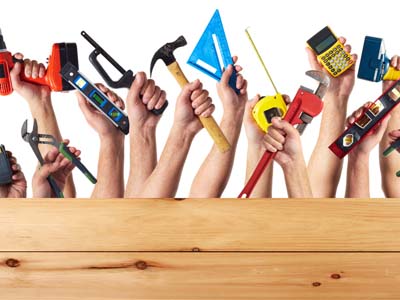
Electronic tools for beginners and professionals (image courtesy: eFileCabinet )
It is essential for hobbyists and beginners to familiarize themselves with how all these pieces of hardware work to make the best use of these tools. Furthermore, it is necessary to ensure that the quality and cost of these components are met without any compromise in terms of safety.
Mentioned here is a list of electronic tools and equipment that are useful for every engineer while working on electronic projects:
1. Hand tools
The most basic category of tools used in every electronic project is the hand tool. These tools are manually operated without any power source and have been in use since the Stone Age. They require a lot of dexterity and precision to operate.
a) Driving tools
Drive tools are generally used in projects to tighten, loosen, and remove screws. They are also used to remove drills, screws, nuts and bolts from surfaces and require manual force during operation.
Screwdriver:
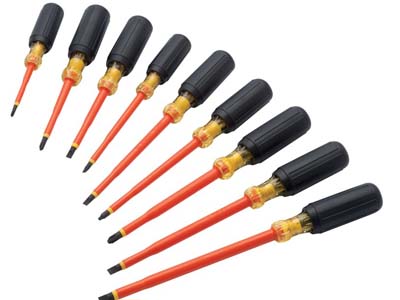
A set of screwdrivers used in electronics projects (image courtesy: Amazon)
These tools are made of hard steel and tempered on the tip for loosening or tightening screws with slotted heads. Typically, it is recommended to purchase screwdrivers in a complete set so that you have one for each type of screw. Screwdrivers can be available in different shapes and sizes, mainly including:
Standard/Flat Driver Screw: It is a wedge-shaped driver that resembles a negative sign on the tip and is used to tighten single-slot head screws.
Philips screwdriver: It has a cross tip similar to a plus sign (+) and is used to tighten screws with cross slot heads.
Stubby screwdriver: It has a short shaft or blade and is used in tight spaces where a standard screwdriver cannot be used.
Key:
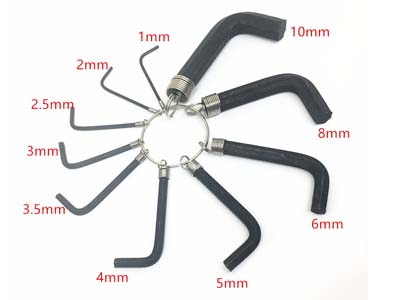
Allen wrench set (image courtesy: AliExpress)
A wrench is used to turn objects, usually rotating fasteners such as nuts and bolts, or to keep them from turning. The main function is to screw in screws with hexagonal heads or Allen screws. In other words, it is used to tighten screws in places where regular screwdrivers won't work.
b) Cutting tools
These tools are used to remove certain portions of materials from a part through operations such as deformation, turning, or shaping.
Utility Knife:

Utility knife (image courtesy: Pinterest)
It is one of the essential elements when dealing with electronics as it can cut most materials. It's portable, practical, and even has a belt clip for convenient carrying.
Mountain range:
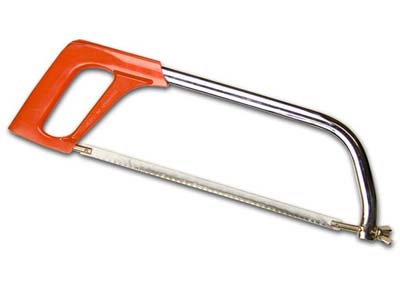
Mountain range
It is a fine-toothed saw made for cutting metals, but it can also cut various materials such as plastic and wood. They can be manual or motorized and come in different varieties.
Pliers:
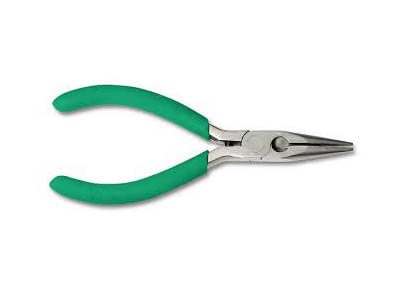
Pliers used in electronics (image courtesy: Waytek)
Pliers are multifunctional tools, including the following categories:
Nose pliers: These are useful when you need to hold components with short leads that need to be soldered or desoldered from the printed circuit board, but cannot be held with your bare hands.
Side Cutting Pliers: They can also be used to cut off excess components on circuit boards or to cut wires to shorter lengths before use.
Channel locking pliers: They are used to tighten Romex connectors in electrical boxes, removing holes in the boxes and adjusting expansion-type ceiling fan boxes.
Line pliers: They can cut, twist wires and clamp wires for pulling. They have a square end that is great for twisting wires, a center cutting blade, and a grip area for pulling wires.
Wire stripper:

Wire stripping tools used in electronics (image courtesy: Carlton Bates)
It is a portable tool for removing electrical insulation from wires without damaging the inner wire. Manual modes require some care during use, while automatic modes allow even novice users to remove insulation quickly.
These tools are equipped with cutting teeth of different sizes for wires of different sizes and have a cutting portion for cutting the wire.
c) Surgical Tools
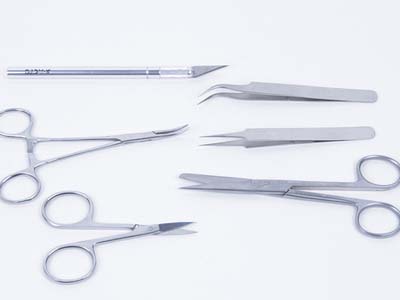
Surgical tools used in electronics, including scissors, tweezers and tweezers (image courtesy: evilmadscientist)
There are certain surgical tools that can sometimes be used as electronic tools, such as tweezers, tweezers, and scissors. While in medical environments these tools are used to extract objects from the body, in electronic environments these tools can help deal with circuits and the breadboard during soldering or desoldering.
Although tweezers and tweezers are identical, the fundamental difference is that tweezers have sharper tips and are compressed to extract an object, while tweezers have larger handles and their tips have teeth or fluted sections for grasping materials. Basically, these instruments are used to hold things that are too small to hold with your hands or where precision is required.
d) Boring tools
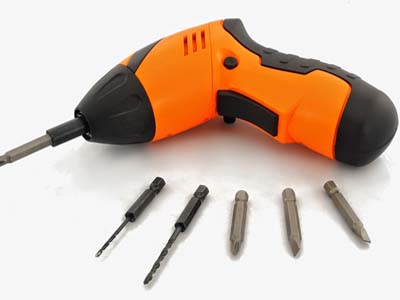
Portable electric drill used in electronics (image courtesy: blogspot)
The drilling and boring process involves making holes with the help of rotating tools. Drilling simply pushes the material to one side without removing it, while drilling separates the material to leave a hole. Furthermore, drilling is done at high speed with low torque, meaning that a little material is removed with each revolution, while drilling requires low speed and high torque, as it has a larger radius. These tools include:
Portable electric drill: drilling holes in plastic or metal chassis with drill bits
Mini drill: drilling holes in printed circuit boards
Metal files: contain narrow, pointed, parallel projections at one end into which a handle can be fitted.
2. Soldering Tools
When working with printed circuit boards and breadboards, you need to use some soldering tools to connect the circuits with wires and components. For this, there are soldering and desoldering tools as follows:
a) Soldering iron
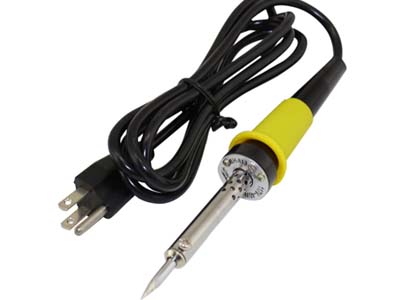
Soldering iron (image courtesy: Circuit Specialists)
A soldering iron is a device for applying heat to melt solder to form an electrical and physical connection between two surfaces. It consists of a heated metal tip and an insulated cable. For electrical projects, wires are often soldered to PCBs, other wires, or terminals.
The price range varies from $10 to $200, with the basic models being easily used by plugging them directly into an outlet on the hand tool. Additionally, soldering iron tips are often removable and can be available in a wide variety of shapes and styles to accommodate different types of soldering work.
b) Soldering Station

Soldering iron holder (image courtesy: SparkFun)
The soldering tool holder is used to keep the soldering iron in a place away from flammable materials. The station also comes with a sponge for cleaning the soldering iron tip.
c) Desoldering tools

Desoldering pump (image courtesy: Instructables)
These tools are used to remove soldered wires and components on printed circuit boards for repair and troubleshooting, usually when there is a fault in the connections. This includes pumps and copper braided wicks. A desoldering pump removes the solder with a quick vacuum action.
3. Measuring Tools
In almost all electronic projects, it is necessary to measure certain parameters associated with the device or circuit such as voltage, resistance, current or some signals, etc.
a) Multimeter:
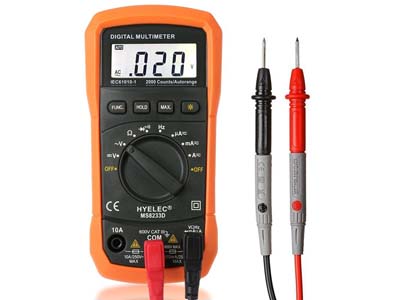
Multimeter (image courtesy: Amazon)
A multimeter is very important because it measures voltage, current, resistance and other aspects of electricity and circuits. They are generally small, run on batteries, and carry large digital displays. There is also a button for selecting the measurement function and a pair of probes for connecting the device to the circuit. While full-featured professional multimeters can be purchased for hundreds of dollars, a basic model can be purchased for approximately $10.
b) LCR meter
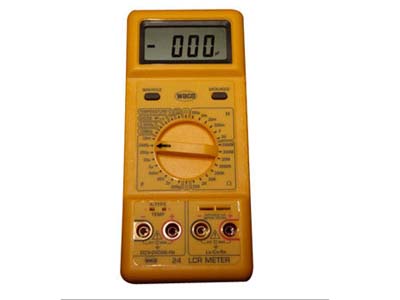
LCR meter (image courtesy: techno instruments)
LCR meters are used to measure inductance, capacitance and resistance involved in an electronic configuration. They are available in two variants: a low-cost version and a high-cost version. The former measures the total impedance of a component while the latter measures the entire impedance of the components, the equivalent series resistance (ESR) and the quality factor (Q) of the component.
c) Oscilloscope
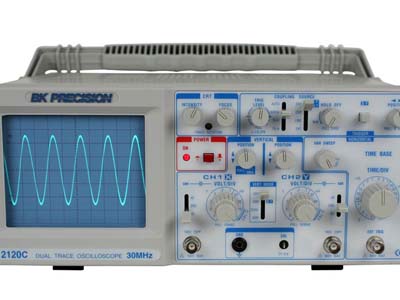
Oscilloscope (image courtesy: B&K Precision)
Although oscilloscopes may not be necessary for hobbyists and beginners, they are useful when learning electronics and troubleshooting circuits. An oscilloscope displays time-varying signals, such as voltage waveform patterns, on a screen that helps visualize circuit functions. While basic models cost around $300, sophisticated ones can be purchased for several thousand dollars.
d) Signal Generator

Signal generator (image courtesy: Tektronix)
It is a device that generates electronic signals and repetitive or non-repetitive waveforms, depending on the need and field of application. There are different categories of signal generators with different levels of capabilities, dimensions, designs and parameters. Applications include designing, repairing electronic devices, and troubleshooting.
Each versatile signal can create an unlimited number of signals to meet debugging challenges. It is also possible to vary the output of the signal generator by setting the amplitude and frequency of the output signal while a simulation is in process.
4. Prototyping Tools
When dealing with electronic components, beginners tend to make a lot of mistakes due to lack of experience in connecting wires. Therefore, in almost all projects, especially for beginners, it is recommended to use breadboards and scratch boards to establish connections. These prototyping tools include:
a) Test board
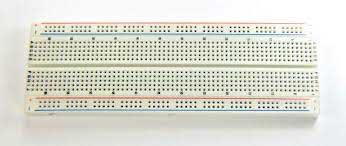
Breadboard (image courtesy: Adafruit Learning System)
A breadboard is a flat plastic base with an array of holes into which wires and components are connected. A breadboard is used to build prototype versions of sophisticated electronic circuits by connecting wires, resistors, capacitors, and other devices. This is useful in practice as the connection is not permanent, so wires can be connected and disconnected as needed.
b) Jumper wires

Jumper wires (image courtesy: Solarbotics)
Jumper wires are used on the breadboard to make connections between all the components. They can be connected to separate boards or devices as they are generally compatible with 2.54mm or 2mm connectors.
c) Zero PCB
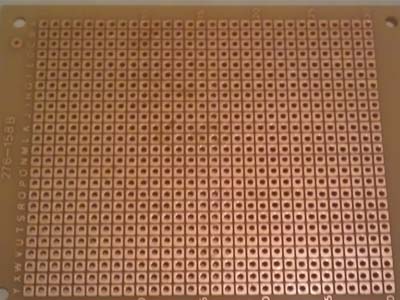
Zero PCB (image courtesy: efxkits )
A Zero Board or Zero PCB is a board with copper patches devoid of any connection. To work on such a board, the user must solder the components or connect them by soldering the legs to the wire.
5. Auxiliary Tools
In addition to the tools mentioned above, there are some miscellaneous tools that are necessary in all electronic setups – including both amateur and professional level projects. These are:
– Magnifying glass
- Brush
- Measuring tape
- Hammer
- Flashlight
You can read our Blog and Article section for more topics on electronic engineering, industry and technology.

